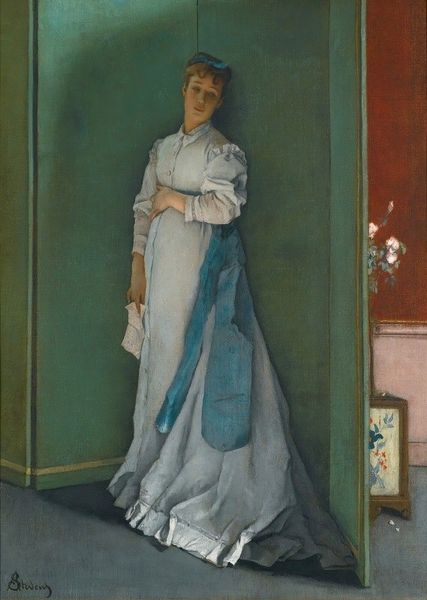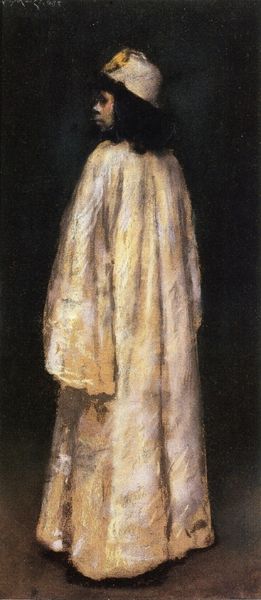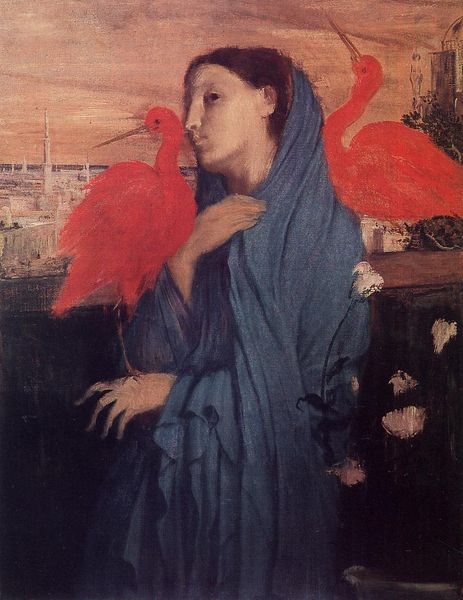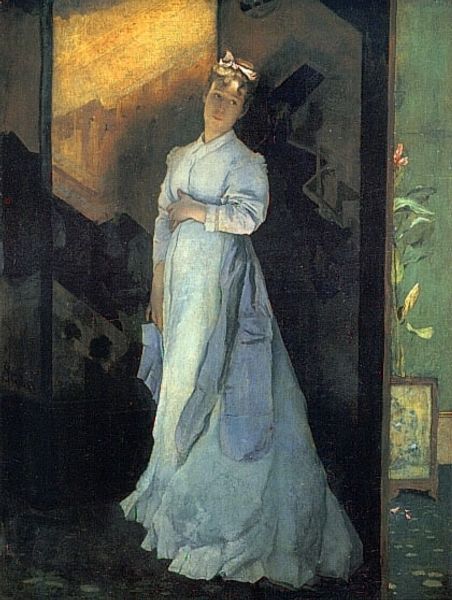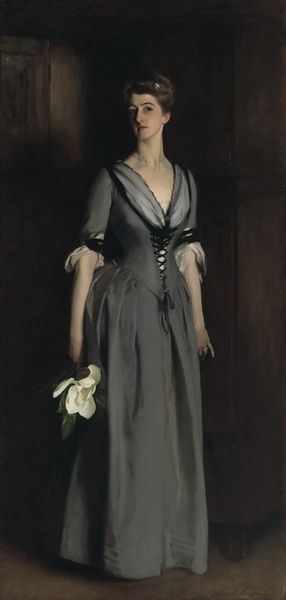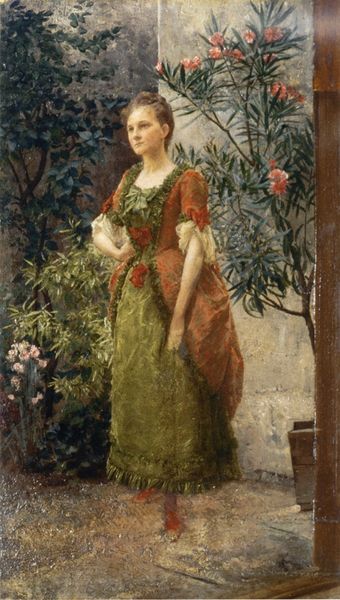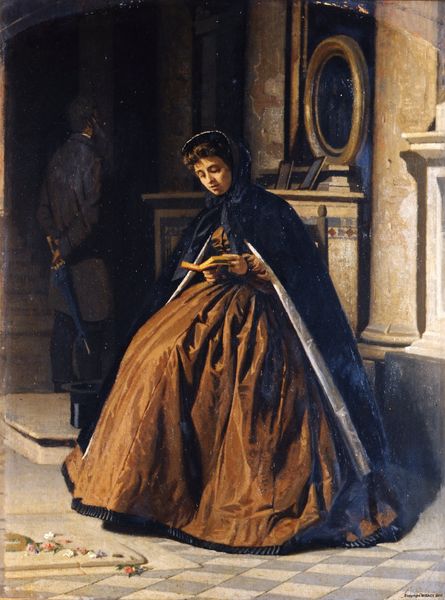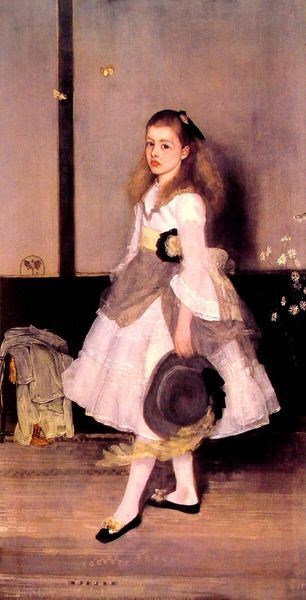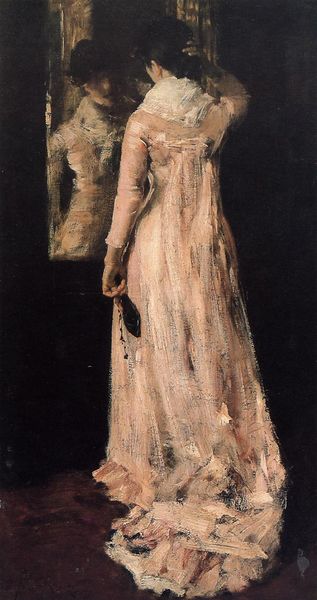
painting, oil-paint
#
portrait
#
painting
#
impressionism
#
oil-paint
#
oil painting
#
genre-painting
#
modernism
#
realism
Dimensions: 171.1 x 105.8 cm
Copyright: Public domain
Curator: Stepping into Edouard Manet's world, we find ourselves face-to-face with "The Street Singer," painted around 1862 using oil on canvas. It now resides at the Museum of Fine Arts in Boston. What's your initial take on this compelling woman? Editor: I am struck by the rather melancholy atmosphere. Despite the presence of flowers, the somber palette and the woman's somewhat distracted gaze suggests a certain weariness, perhaps even disillusionment with her profession. It's interesting, almost as though a glimpse behind the curtain of Parisian street life. Curator: Exactly, the painting serves almost as an urban portrait capturing the everyday lives in mid-19th-century Paris, yet Manet is doing much more here, right? She isn’t idealized; she's caught between performances, her instrument in tow, a scattering of cherries offering small comfort. It is really a gritty look at what Realism could be. Editor: Yes, and consider the politics of depicting such a subject. Before, these women were almost invisible, pushed to the side in favor of portraying an idealized version of the bourgeoisie. Manet puts the laboring class front and center. It’s fascinating to observe Manet's defiance of academic expectations to capture modern life. He offers no romanticization, just her blunt reality of class. Curator: It’s a visual declaration, right? Now that I’m studying the light again, it strikes me the way that even in such muted tones, Manet's brushwork practically vibrates. The texture, the light almost breathes life into the piece. Did this raw vitality cause the public distress? Editor: Undoubtedly. It challenged established artistic norms and, therefore, social hierarchies. Museums began shifting their own missions as galleries emerged to show more progressive works of art. There were strong reactions both positive and negative to the image of a woman doing anything other than performing domestic tasks. This made her and others in similar straits social outcasts. Manet captures the emergence of social tensions through an aesthetic lens. Curator: Such powerful tensions reflected in such a simple scene. Thinking of it again, Manet invites us into the complex, vibrant underbelly of Parisian life, offering us more than just a singer, and really more like the soul of a city on the brink of a social shift. Editor: And for me, I think Manet has really pulled off an unexpected and ultimately successful and human portrait here; it encourages you to be reflective of modern urban life, then and now.
Comments
No comments
Be the first to comment and join the conversation on the ultimate creative platform.


